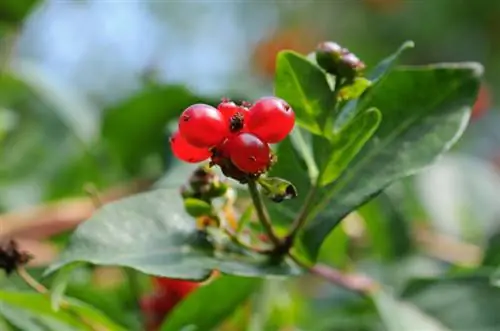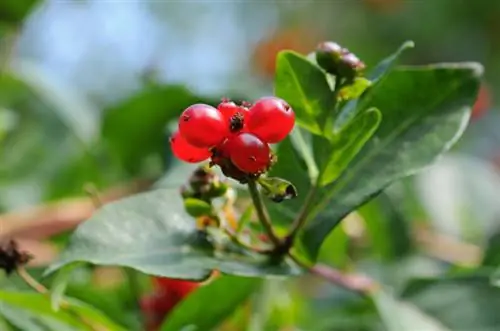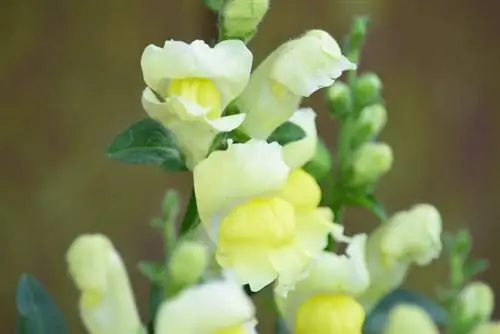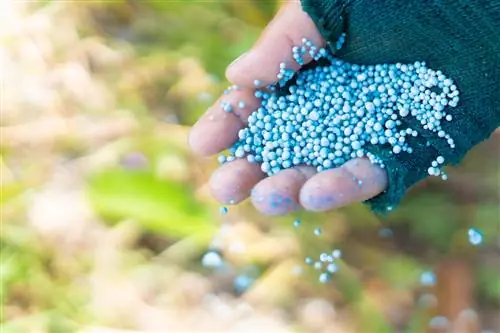- Author admin [email protected].
- Public 2023-12-16 16:46.
- Last modified 2025-01-23 11:20.
The red honeysuckle (Lonicera xylosteum) is often grown as a hedge plant because of its easy care and decorative berries. But be careful: the berries, which look similar to cherries, are poisonous!

Is the red honeysuckle poisonous?
The red honeysuckle (Lonicera xylosteum) is poisonous to humans and animals because its berries contain the poisonous bitter substance xylostein. If consumed, nausea, vomiting, abdominal pain, diarrhea, cardiovascular disorders and seizures may occur.
Red honeysuckle poisonous to humans and animals
Unlike blue honeysuckle varieties, the berries of the red honeysuckle contain the bitter substance xylostein. It is poisonous to humans and many animals, especially pets.
Eating even small amounts of red honeysuckle can cause a number of problems:
- Nausea
- Vomiting
- Stomachache
- Diarrhea
- accelerated pulse
- Redness of the face
- Sweating
Eating large quantities of honeysuckle can have serious consequences:
- Apathy
- Cardiovascular disorders
- Fever and seizures
Red honeysuckle trees should therefore not be planted in gardens where children play or where pets frequent.
Tip
In contrast to the red honeysuckle, the fruits of the blue honeysuckle (Lonicera caerulea) are not poisonous. The interesting-looking blue fruits of the Mayberry variety taste juicy and sweet and can be eaten raw or cooked.






